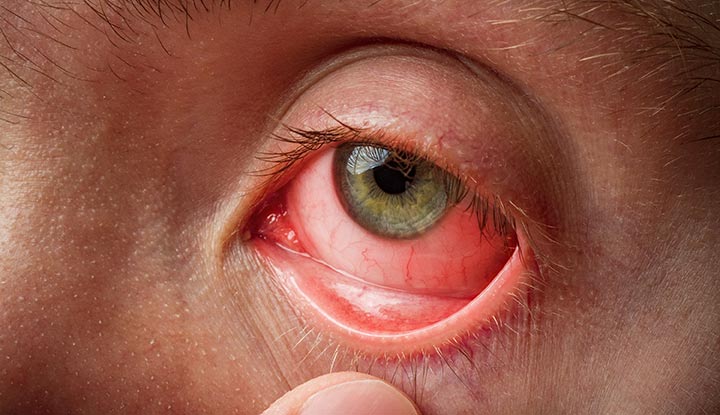An infection of the clear membrane that covers the eyelid and eyeball is known as pink eye. We refer to this membrane as the conjunctiva. Small blood vessels in the conjunctiva are more noticeable when enlarged and inflamed. The crimson or pink color of the eye whites is due to this. Pink eye infection is also called conjunctivitis.
Viral infections most frequently cause pink eye. Additionally, bacterial infections, allergic reactions, and — in infants — partially opening tear ducts can also be responsible for it. Pink eye might be irritating, but it rarely impairs your eyesight. Additional pink eye can be uncomfortable, but treatments can help.
Receiving an early diagnosis and implementing specific precautions can help minimize the spread of pink eye because it can be contagious. Luckily you can use an online doctor for pink eye to seek treatment. Here is what you need to know about pink eye infections.
Symptoms
The most typical signs of pink eye include:
- Redness in either one or both eyes
- Itchiness in either one or both eyes
- An unpleasant sensation in one or both eyes.
- A discharge in one or both eyes that develops a crust during the night and may make it difficult for your eye(s) to open in the morning.
- The fear of light is also known as photophobia.
Causes
Pink eye has a variety of causes, such as:
- An eye splash with chemicals.
- Anything alien in the eye.
- A clogged tear duct in infants.
Conjunctivitis is bacterial and viral.
Adenovirus is responsible for the majority of pink eye occurrences. However, other viruses, such as herpes simplex and varicella-zoster, can also be blamed. Bacterial and viral conjunctivitis can coexist with colds or other respiratory infection symptoms, like a sore throat.
Using improperly cleaned or borrowed contact lenses might result in bacterial conjunctivitis. Both are highly contagious. Direct or indirect exposure to an infected person’s eye discharge can spread the disease. It can happen to either or both eyes.
Allergic conjunctivitis
A reaction to an allergen like pollen causes allergic conjunctivitis, which affects both eyes. Your body makes an immunoglobulin E (IgE) antibody in reaction to allergens. IgE causes particular cells in the mucous lining of your airways and eyes to release inflammatory compounds, such as histamines. The histamine your body releases can cause various allergy symptoms, including red or pink eyes.
Conjunctivitis brought on by irritability.
Conjunctivitis is also related to eye irritation from chemical splashes or foreign objects. Redness and irritation can occasionally result from flushing and washing the eye to remove the chemical or item. The symptoms, including watery eyes and a mucus discharge, typically disappear in a day or so.
When to visit a doctor
Red eyes may be a symptom of significant eye disorders. These disorders may bring eye pain, the sensation that something is stuck in your eye, impaired vision, and light sensitivity. Seek urgent care if you develop these symptoms. Make an appointment with your eye doctor to ensure you don’t have a more severe eye infection related to contact lens use if your symptoms don’t start to improve within 12 to 24 hours.

